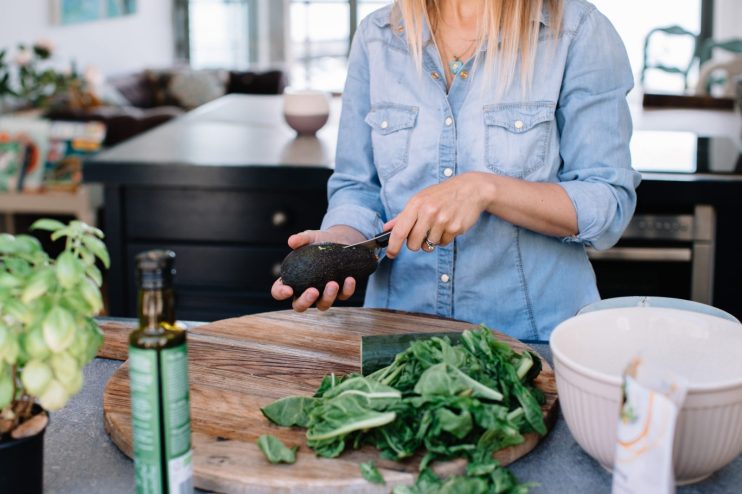Eat well to stay well! Healthy eating is easier than you think

Covid-19 has changed our lives immeasurably – and it’s been tough, with restrictions in place that none of us ever expected.
But that doesn’t mean 2020 has to be a year remembered only for the bad days. The year also offers an opportunity to make changes that will improve your health and wellbeing for years to come.
We now know that living with obesity is a key indicator of an individual being hit badly if they contract Covid-19 – but of course, being overweight is a significant factor in complicating any number of maladies.
So why not make 2020 the year to start a health kick and get yourself in shape?
Do you need to lose weight?
We come in all shapes and sizes, but the Government suggests Brits to use the NHS’ Body Mass Index – BMI – calculator to work out if you’re a healthy weight for your gender, age and height.
The tool is available here on the NHS website, and is really easy to use. Once you’ve popped in your details, you’ll find lots of useful tools and resources to help you kick start your health.
If you’re looking to lose weight download the NHS 12 week weight loss plan which helps you keep track of your calories and progress.
But it’s not just the BMI calculator you can use – a simple tape measure is worth investing in, too. If you’re carrying too much weight around your stomach, you could raise the risk of heart disease, type 2 diabetes or a stroke.
So, to measure your waist:
- Find the bottom of your ribs and the top of your hips
- Wrap a tape measure around your waist midway between these points
- Breathe out naturally before taking the measurement
Regardless of your height or your BMI, you should try to lose weight if your waist is 37 inches or more for men, or 31.5 inches or more for women. If your waist is above 40 inches or 34.5 inches, for men and women respectively, you’re at high risk – so you should see a GP in the first instance.
Five alive
We all know the slogan, but it really is vital to get five portions of fruit and vegetables into your diet every day. They’re packed full of crucial nutrients and vitamins that allow our bodies to grow and develop as they should, whilst strengthening our immune system.
5 reasons for eating 5 a day
- Fruit and vegetables are a source of vitamins and minerals, including folate, vitamin C and potassium.
- They’re a good source of dietary fibre, which can help to maintain a healthy gut and prevent constipation and other digestion problems. A diet high in fibre can also help reduce your risk of bowel cancer.
- They can help to reduce your risk of heart disease, stroke and some types of cancer.
- Fruit and vegetables contribute to a healthy, balanced diet.
- Fruit and vegetables taste delicious and there’s so much variety to choose from.
The NHS website has all the information you need on the best way to get your fruit and vegetables as part of a normal diet, with the minimum of fuss. Why not add fruit to your breakfast, or replace sugary snacks with an apple?
The best place to start is the NHS’ tips and tricks page, whilst the 5-a-day budget advice portal can show you to eat healthier no matter your budget.
Finding out what makes a healthy diet
Lockdown has made all of us better cooks, so leave takeaways for special occasions and cook up healthy treats at home.
The first thing to do is check out the NHS’ Eatwell Guide, which lets you know exactly what makes up a healthy, balanced diet.
The NHS has also compiled 8 tips for healthy eating.
Mix up your recipe store – and have fun in the kitchen!
There’s so many recipes out there that it can be difficult to know where to start, but the NHS has pulled together hundreds on its website as well as a new app, One You Easy Meals. No matter whether you still feel like a novice in the kitchen, these are simple and memorable weekdays meals that can ensure you and your family are getting the nutrients they need. Try these two for starters.
Sweet Potato Pasta
You’ll need:
- 300g sweet potato, peeled and cut into cubes
- 300g dried pasta
- 100g peas (fresh or frozen)
- 2 tbsp 1%-fat milk
- 150g low-fat natural yoghurt
- 40g reduced-fat hard cheese, grated
- 1 pinch ground black pepper
Instructions
- Bring a pan of water to the boil and cook the sweet potato for 12 to 15 minutes, until tender. Drain well and set aside.
- Cook the pasta according to pack instructions. Drain well then return to the pan.
- Stir the sweet potato chunks and peas through the pasta. Add the milk and yoghurt, and heat gently for 2 minutes. Serve sprinkled with the cheese and a little ground black pepper.
Pizza Crumpets
You’ll need:
- 4 crumpets
- 4 tbsp tomato purée
- 4 tomatoes, sliced
- 2 tsp dried mixed herbs
- 40g reduced-fat hard cheese, grated
- pinch of ground black pepper
Instructions
- Preheat the grill and toast the undersides of the crumpets.
- Flip the crumpets over and spread each with 1 tbsp of tomato purée. Arrange the tomato slices on top.
- Grill the tops of the crumpets for 1 to 2 minutes.
- Sprinkle the herbs and cheese evenly over the crumpets and grill for another minute or so, until the cheese melts and bubbles. Serve at once.
You can download the app from the NHS’ website or your mobile, so you’ve always got it handy when you’re looking for inspiration, and there’s plenty more here online.